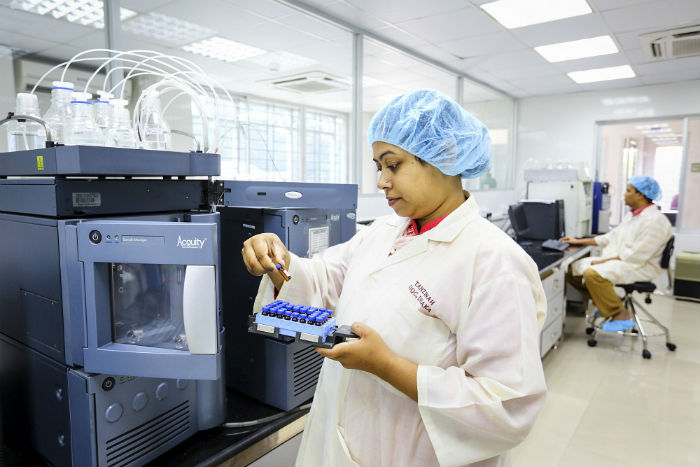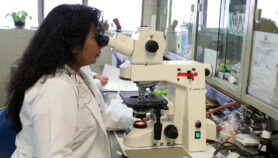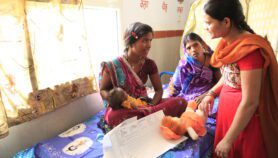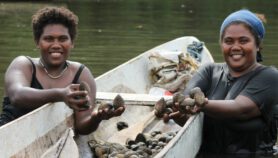By: Crispin Maslog
Send to a friend
The details you provide on this page will not be used to send unsolicited email, and will not be sold to a 3rd party. See privacy policy.
When scientists joined non-scientists on Earth Day (April 22) to march for science and against climate change, the vulnerable Asia-Pacific region, and much of the developing world, were conspicuously missing.
The nerve centres for the march were Washington, London and Paris, but media reported smaller satellite marches in 600 or more cities all over the world on the same day.
That tens of thousands of scientists from hundreds of cities, empowered by social media, came together with non-scientists even for a day, was an achievement. Scientists "are not famous for their camaraderie," a professor of carbon management at the University of Edinburgh, David Reay, has said. "We are trained to question, criticise and, where needed, contest each other's work.” (1)
Unfortunately, the march happened mostly in the West and hardly a word was heard from Asia-Pacific and the developing world in general. There was a sense that the march was driven by politics—to which scientists are known to be allergic.
But, the first global March for Science had two non-political objectives: to defend science and to defend the earth against the threat of climate change and climate change deniers.
“Scientists are not famous for their camaraderie, we are trained to question, criticise and, where needed, contest each other's work.”
David Reay, University of Edinburgh
For scientists concerned about the threat of climate change mainly, this first worldwide march for science was rather timely, happening soon after the Paris Climate Change Agreement came into force in 2016. The Paris Agreement’s central aim is to keep global temperature rise this century well below 2 degrees Celsius—as low as 1.5 degrees Celsius. The march gives needed impetus to push the accord forward.
At the same time, the marchers staunchly defended science against the threat of “alternative facts” as they brandished placards that shouted: Stop the assault on facts! Down with alternative facts! Stop assault on fact-based thinking! Keep our science great! Tell taxpayers why science matters!
The beginnings of the movement were apparently triggered by “that guy over there” in the White House. According to the placards, it happened when U.S. President Trump’s blueprint budget proposed to cut $12.6 billion from the Department of Health and Human Services. (2)
Asian scientists missing
We therefore note with dismay that Asian world scientists were not more prominent in this March for Science. Except for Tokyo, Seoul and Manila, not a peep. The giant economies of China, India and Indonesia were conspicuous by their absence.
The 10 member countries of the Association of Southeast Asian Nations (ASEAN), having a summit meeting in Manila (April 29) at the time of the march, were nowhere to be heard. In Manila, there was just a small demonstration and a public statement on the website by 350.org Philippines, and calls for phasing out of fossil fuels and a shift to renewable energy by Agham Youth and activists.
But, we hope this march has broken the ice and will not be one and done. We have argued in this column many times in the past that Asian and developing world scientists should come out of their laboratories and speak out their minds on issues of the day. They certainly are more knowledgeable on science issues and their impact on society.
Scientists could consider several courses of action: engage in politics like in the Philippines when they formed a political party recently and got elected to Congress, although they lost in the following election. This will ensure that laws passed by Congress are evidence-based.
The probably 10,000 prominent and potentially influential scientists who are members of some 50 national academies of science and technology in the Asia-Pacific region can make their voices be heard. (4)
These eminent citizens of the developing world should go out to the streets figuratively, give lectures on the role of science in society and fight for bigger government budgets for science.
We urge that the United Nations proclaim a month for science each year—March—and call it March for Science. Earth Day, April 22, should focus on the environment.
Let scientists’ voices be heard. Let the marches continue.
Crispin C. Maslog, a former journalist with Agence France-Presse, is an environmental activist and former science professor at Silliman University and University of the Philippines Los Banos, Philippines. He is a founding member and currently Chair of the Board, Asian Media Information and Communication Centre based in Manila.
This piece was produced by SciDev.Net’s Asia & Pacific desk.
References
1. Thousands join March for Science to fight ‘alternative facts,’ Agence France-Presse, April 23, 2017.
2. March for Science: Protesters gather worldwide to support 'evidence,' by Laura Smith-Spark and Jason Hanna, CNN, April 23, 2017.
3. Asia-Pacific Analysis: A quaint court ruling on GM eggplant, by Crispin C. Maslog, SciDev.Net, Dec. 27, 2015.
4. Asia’s top scientists need to be vocal on crucial issues, by Crispin C. Maslog, SciDev.Net, Jan. 25, 2017.














